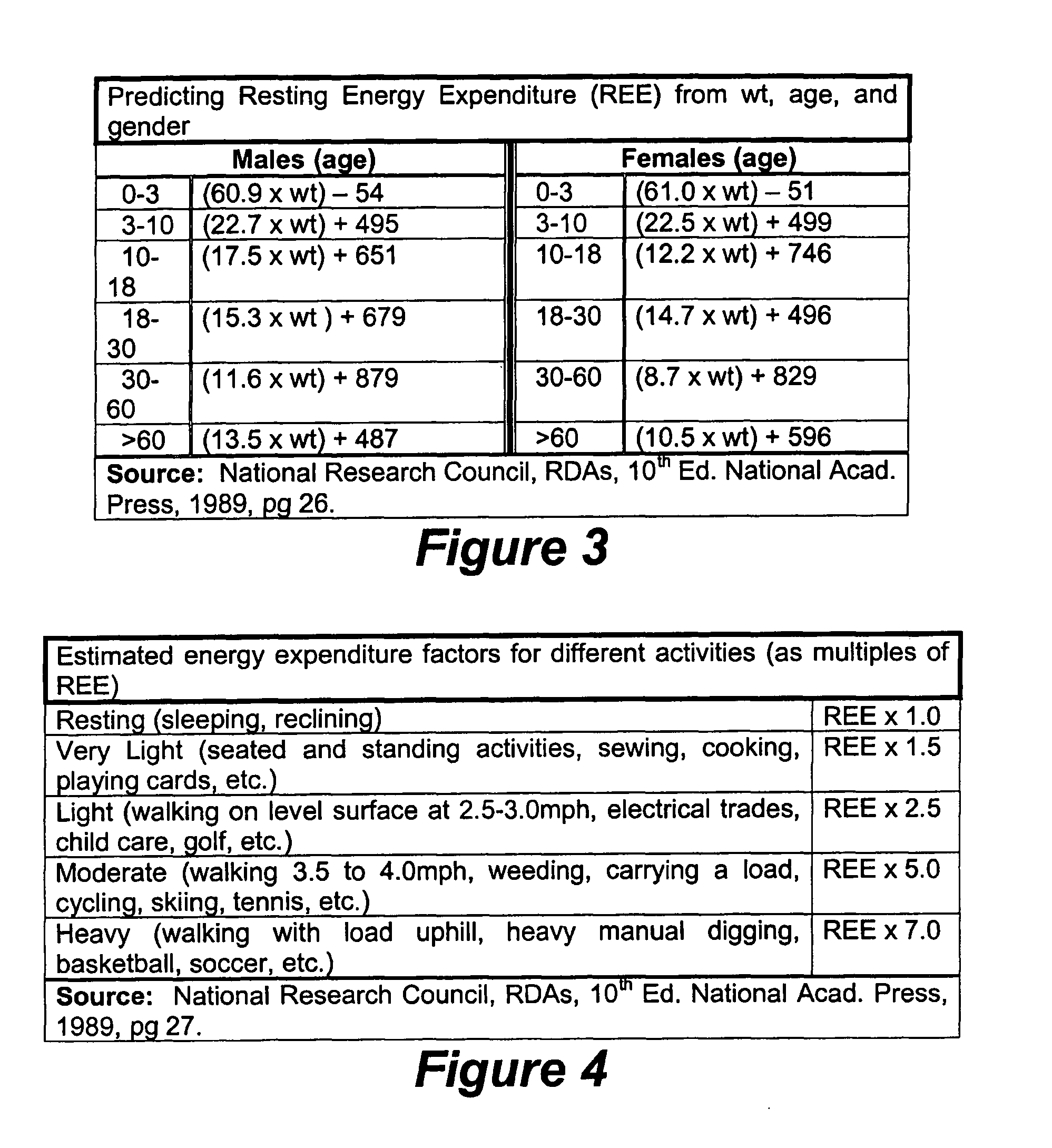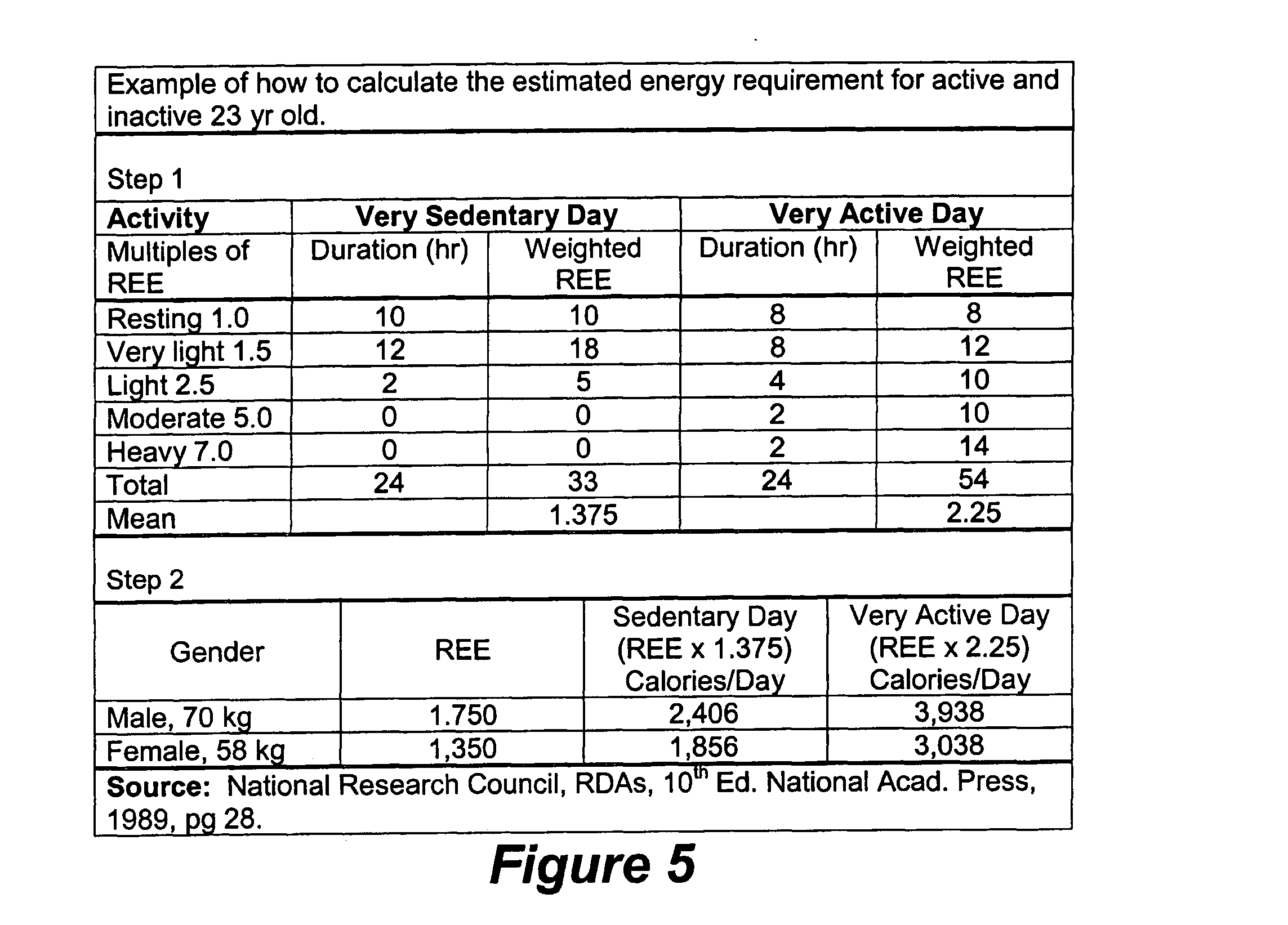Methods, systems, and apparatus for monitoring within-day energy balance deviation
a technology of energy balance and deviation, applied in the field of health management monitoring methods, systems and apparatus, can solve the problems of coronary heart disease, overweight or obese individuals are at increased risk of hypertension, and the actual obesity rate in the u.s. is underestimated
- Summary
- Abstract
- Description
- Claims
- Application Information
AI Technical Summary
Benefits of technology
Problems solved by technology
Method used
Image
Examples
Embodiment Construction
[0048] Some or all of the above issues, among other things, are addressed by various embodiments of the invention described herein. Various embodiments of the invention can be described with or in conjunction with the following definitions, terms, and associated processes.
[0049] Determining Energy (Caloric) Expenditure
[0050] Energy expenditure (i.e., the amount of calories expended by a subject over a defined period of time) is a summary value of basal energy expenditure or resting energy expenditure, thermogenesis (resulting from heat loss, the specific dynamic action [SDA] of the diet, and other factors such as drugs), and all physical work beyond the resting state. The SDA of food represents the energy required to extract energy from consumed foods. As an example of the SDA, if twenty (20) calories were required to extract the energy from a piece of fruit from which ninety (90) calories were obtained, then the SDA of consuming the fruit would be twenty (20) calories. This pheno...
PUM
 Login to View More
Login to View More Abstract
Description
Claims
Application Information
 Login to View More
Login to View More - R&D
- Intellectual Property
- Life Sciences
- Materials
- Tech Scout
- Unparalleled Data Quality
- Higher Quality Content
- 60% Fewer Hallucinations
Browse by: Latest US Patents, China's latest patents, Technical Efficacy Thesaurus, Application Domain, Technology Topic, Popular Technical Reports.
© 2025 PatSnap. All rights reserved.Legal|Privacy policy|Modern Slavery Act Transparency Statement|Sitemap|About US| Contact US: help@patsnap.com



